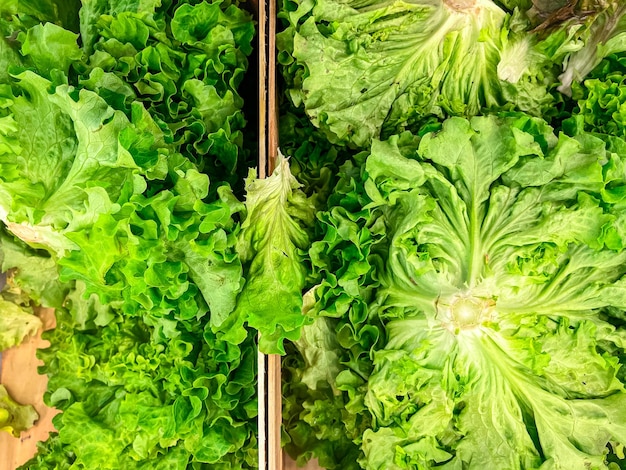Urban Farming Revolution: Vertical Farms & Food Access by 2030

The urban farming revolution, particularly through vertical farms, promises to transform food access by 2030 by bringing sustainable agriculture into urban centers, reducing transportation costs, and ensuring year-round crop production, ultimately enhancing food security.
The urban farming revolution: How vertical farms could change food access by 2030 is rapidly gaining momentum as cities grapple with food security challenges and environmental concerns. Vertical farms, with their innovative approach to agriculture, are poised to play a pivotal role in shaping a more sustainable and equitable food system.
What is the Urban Farming Revolution?
The urban farming revolution signifies a shift towards integrating agriculture within urban environments. It’s about bringing food production closer to consumers, reducing the carbon footprint associated with transportation, and enhancing food security in densely populated areas. Vertical farms are a key component of this revolution.
Benefits of Urban Farming
Urban farming offers numerous advantages, ranging from environmental sustainability to community empowerment. By utilizing spaces within cities, we can minimize the need for long-distance transportation of produce, cutting down on greenhouse gas emissions and ensuring fresher, more nutritious food for urban residents.
- Reduces transportation costs and emissions
- Enhances food security and access in urban areas
- Creates jobs and economic opportunities within communities
- Promotes sustainable agriculture
Challenges of Urban Farming
Despite its potential, urban farming faces challenges. High initial investments in technology and infrastructure are necessary. Also, it’s necessary to ensure that urban farming initiatives are inclusive and beneficial for all community members, especially those with lower incomes.
In conclusion, the urban farming revolution promises a more sustainable, equitable, and secure food future. Overcoming these challenges is essential for realizing its full potential.
The Rise of Vertical Farms
Vertical farms represent a cutting-edge approach to agriculture. These indoor facilities use controlled environments and stacked layers to maximize crop production in a minimal footprint, offering a solution to land scarcity and seasonality issues.

How Vertical Farms Work
Vertical farms operate on the principles of controlled environment agriculture (CEA). This involves regulating temperature, humidity, light, and nutrients to optimize plant growth. Hydroponics, aeroponics, and aquaponics are common techniques used in these facilities.
These methods reduce water consumption by recycling water in closed-loop systems. Automated systems monitor and adjust environmental conditions, ensuring optimal plant health and productivity.
Advantages of Vertical Farms
Vertical farms offer several advantages over traditional agriculture, making them a promising solution for sustainable food production. One of the primary benefits is their ability to produce crops year-round, regardless of external weather conditions. Additionally, they minimize the need for pesticides and herbicides, leading to healthier food.
- Year-round crop production
- Minimal use of pesticides and herbicides
- Reduced water consumption
- Higher yields per square foot compared to traditional farming
In summary, vertical farms are transforming food production. They provide a controlled environment for growing crops year-round, reduces water use, and minimizes the necessity for pesticides and herbicides.
The Impact on Food Access
One of the most significant promises of vertical farms is their potential to improve food access, particularly in urban areas where fresh, nutritious food options may be limited. By bringing food production closer to consumers, vertical farms can help bridge the gap in food availability.
Addressing Food Deserts
Food deserts, characterized by a lack of access to affordable and healthy food, are a persistent problem in many urban communities. Vertical farms can be strategically located in these areas, providing residents with a reliable source of fresh produce.
By decreasing transportation costs and increasing the shelf life of products, vertical farms can make nutritious food more affordable and accessible to low-income populations. This contributes to reducing health disparities and promoting healthier eating habits.
Local Food Production
Local food production through vertical farms fosters a closer connection between consumers and their food sources. This model supports local economies and reduces reliance on distant food supply chains, which can be vulnerable to disruptions.

Shortening the supply chain and minimizing transit times guarantees freshness and nutritional value, leading to better health outcomes for consumers. Local food production also promotes environmental sustainability by reducing transportation-related emissions.
Ultimately, vertical farms play an essential role in bolstering local food systems. They ensure the continuous supply of fresh produce, supporting community health and economic growth.
Vertical Farms by 2030: A Vision for the Future
As we look ahead to 2030, the role of vertical farms in shaping food access is projected to grow significantly. Technological advancements, increasing investment, and evolving consumer preferences are among the factors driving this expansion.
Technological Advancements
Continued advancements in lighting, automation, and sensor technology will further enhance the efficiency and productivity of vertical farms. LED lighting tailored to specific crops, coupled with AI-powered monitoring systems, will optimize plant growth and resource utilization. Moreover, automation can reduce labor costs and improve consistency in production.
These technological improvements will lead to higher yields and lower operating costs, making vertical farms more economically viable.
Expanding Infrastructure
By 2030, vertical farms are expected to become an integrated part of urban infrastructure, with facilities located in repurposed buildings, shipping containers, and new construction projects. The proximity to urban centers will enable rapid delivery of fresh produce, reducing the risk of spoilage.
Integration with renewable energy sources, such as solar and wind power, will further minimize the environmental footprint of vertical farms. This will lead to a more resilient food supply that can adapt to changing climate. It’ll also ensure the continuity of food production.
In conclusion, vertical farms are set to integrate more closely with urban infrastructure by 2030. These developments, along with technology, will minimize the environmental footprint of food production.
Challenges and Opportunities
While vertical farms offer significant potential, they also face challenges that need to be addressed to ensure their success. High initial costs, energy consumption, and the need for skilled labor are among the key obstacles.
Addressing High Costs
The initial investment in establishing vertical farms can be substantial, particularly when it comes to infrastructure and technology. However, innovations in materials, construction methods, and financing models can help lower these costs.
Government incentives, public-private partnerships, and community funding initiatives can also play a role in making these ventures more accessible to entrepreneurs and communities. Reducing capital costs is the first and most important step.
Energy Efficiency
Vertical farms consume a considerable amount of energy, primarily for lighting and climate control. Transitioning to renewable energy sources, such as solar and wind power, can reduce their carbon footprint. Innovations in LED technology also can increase efficiency.
Energy-efficient designs and control systems can minimize energy use by optimizing lighting schedules, temperature settings, and ventilation. Improving energy efficiency is critical for the long-term sustainability of vertical farms.
Workforce Development
Operating a vertical farm requires a skilled workforce with expertise ranging from horticulture to engineering and data analysis. Developing training programs and educational initiatives is crucial to ensure that people have the adequate and valuable skills.
- Offer scholarships and internships to attract young talent
- Collaborate with universities and vocational schools
- Provide ongoing training to keep workers up-to-date
Therefore, addressing high costs, improving energy efficiency, and developing the workforce are crucial. Overcoming these challenges is essential for the success and sustainability of vertical farms.
Policy and Community Support
Supportive policies and engaged communities are essential for fostering the growth of vertical farms and maximizing their impact on food access. Governments, organizations, and consumers all play a significant role. Support can be in the form of funding, incentives, and policy.
Government Policies
Governments can promote vertical farming through incentives, grants, and regulatory frameworks. Zoning laws, for example, can be amended to allow for urban agriculture, while tax credits can encourage private investment. Public procurement programs can also be altered to include locally grown produce from vertical farms.
Furthermore, governments can invest in research and development to promote technological innovation and industry expertise. Promoting supportive regulation provides a supportive ecosystem for vertical farming.
Community Engagement
Community engagement is crucial for ensuring that vertical farms align with local needs and priorities. Encouraging educational programs and community-supported agriculture models fosters awareness and participation. Establishing partnerships with local schools, hospitals, and food banks ensures that the benefits of vertical farming reach a broader audience.
In summary, supportive policies and engaged communities are essential for the success of vertical farms. Government policies and community engagement provides an environment for urban farming to grow.
| Key Point | Brief Description |
|---|---|
| 🌱 Reduces Transportation | Lessens emissions from long-distance produce transport. |
| 🍎 Year-Round Production | Ensures constant crop availability regardless of the season. |
| 🏙️ Urban Food Access | Improves access in urban food deserts. |
| 💡 Tech Integration | Enhances efficiency and productivity with LED, automation, and AI. |
Revolution: How Vertical Farms Could Change Food Access by 2030
▼
Vertical farms are crucial for urban areas because they increase food production close to consumers. This approach reduces transit times, lowers emissions, and improves nutritional value.
▼
Vertical farms enhance food security by providing a reliable source of fresh produce year-round, regardless of external weather conditions. This stability helps in reducing dependency on long supply chains.
▼
Vertical farms often use technologies like hydroponics, aeroponics, and advanced LED lighting. These technologies permit precise control over growing conditions, optimizing plant health.
▼
Vertical farms diminish water consumption through recycling, use minimal pesticides, and lower carbon emissions from food transportation. This environmentally sound structure supports sustainable agriculture.
▼
Communities may help by backing local vertical farms, participating in educational programs, and backing supportive policies. Together, these steps ensure the effectiveness and incorporation of vertical farms.
Conclusion
The urban farming revolution is more than a trend; it’s a necessary step toward a more sustainable and equitable future. As vertical farms become more sophisticated and integrated into urban landscapes, they hold the potential to transform food access, improve community health, and enhance environmental sustainability. Embracing this revolution requires collaborative efforts from communities, governments, and innovators, all working together to cultivate a brighter, greener tomorrow.





